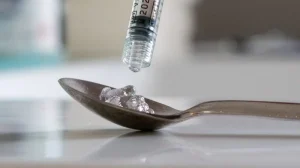It’s easy to blame ageing skin and wrinkles on genetics, but biologically determined factors are just a small part of the story when it comes to skin ageing.
In fact, one study found that UV exposure alone is responsible for 80% of visible facial ageing signs. UV exposure is one of several triggers that cause atmospheric skin ageing, a term that encompasses all the visible signs of skin ageing stemming from exposure to environmental aggressors. What are the environmental aggressors that cause atmospheric ageing, and how can you combat their effects? Here, the skin care experts at WY explain everything you need to know about atmospheric ageing, so you can keep your skin looking healthy and young.
What Causes Atmospheric Skin Ageing?
UV rays, infrared radiation and ozone pollution all play major roles in skin damage and the atmospheric ageing process. These environmental aggressors surround us constantly, so it is important to understand how they work in order to prevent their detrimental effects.
UV radiation is comprised of two main types of rays, UVA and UVB, that effect the skin through sun exposure. UVA radiation penetrates deep into the skin, producing free radicals that contribute to inflammation, wrinkles and fine lines. UVB radiation damages the skin in the form of sunburn.
Infrared radiation is also the result of sun exposure, but its rays are even longer and can penetrate the skin more deeply than UV rays. It targets specific skin cells and creates enzymes that destroy collagen, the protein responsible for the skin’s smoothness and suppleness.
Ozone pollution is the result of sunlight interacting with air pollutants. Ozone’s oxidative abilities—the way it ‘steals’ electrons from cells—acts on our bodies by draining the antioxidants from our skin and damaging collagen.
As the body’s primary barrier for protection against the elements, the skin bears the brunt of the damage caused by these environmental factors. Over time, this damage manifests itself through fine lines, wrinkles, sagging skin, sun spots, inflammation and other signs of ageing. Fortunately, there are protective measures and treatments you can use to heal your skin, even after years of exposure to atmospheric triggers.
How Can You Prevent It?
Sunscreen alone prevents only 55% of the damage caused by free radicals during sun exposure, but a recent study by SkinCeuticals revealed that the daily application of certain antioxidants, in conjunction with sunscreen, can protect the skin from more damaging effects of atmospheric factors. The study demonstrated that the use of C E Ferulic Gel, which contains Vitamins C and E and Ferulic Acid, as well as the use of Phloretin CF Gel, with Phloretin, Vitamin C and Ferulic Acid, significantly increases the skin’s natural environmental protection. Both gels significantly reduced sunburn cell counts, lowered levels of collagen degradation and lessened ozone-induced inflammation.
At WY, we carry SkinCeuticals products because of their proven effectiveness in reducing the signs of atmospheric ageing. Furthermore, we stay on the cutting edge of research on ageing skin and atmospheric damage so that we can provide the best skin care advice possible to our clients. If you’d like to learn more about the environmental factors that cause visible signs of ageing, book a consultation with one of our expert aesthetic doctors today. We look forward to designing a skin care routine bespoke to you in order to restore and protect your skin from atmospheric ageing.






